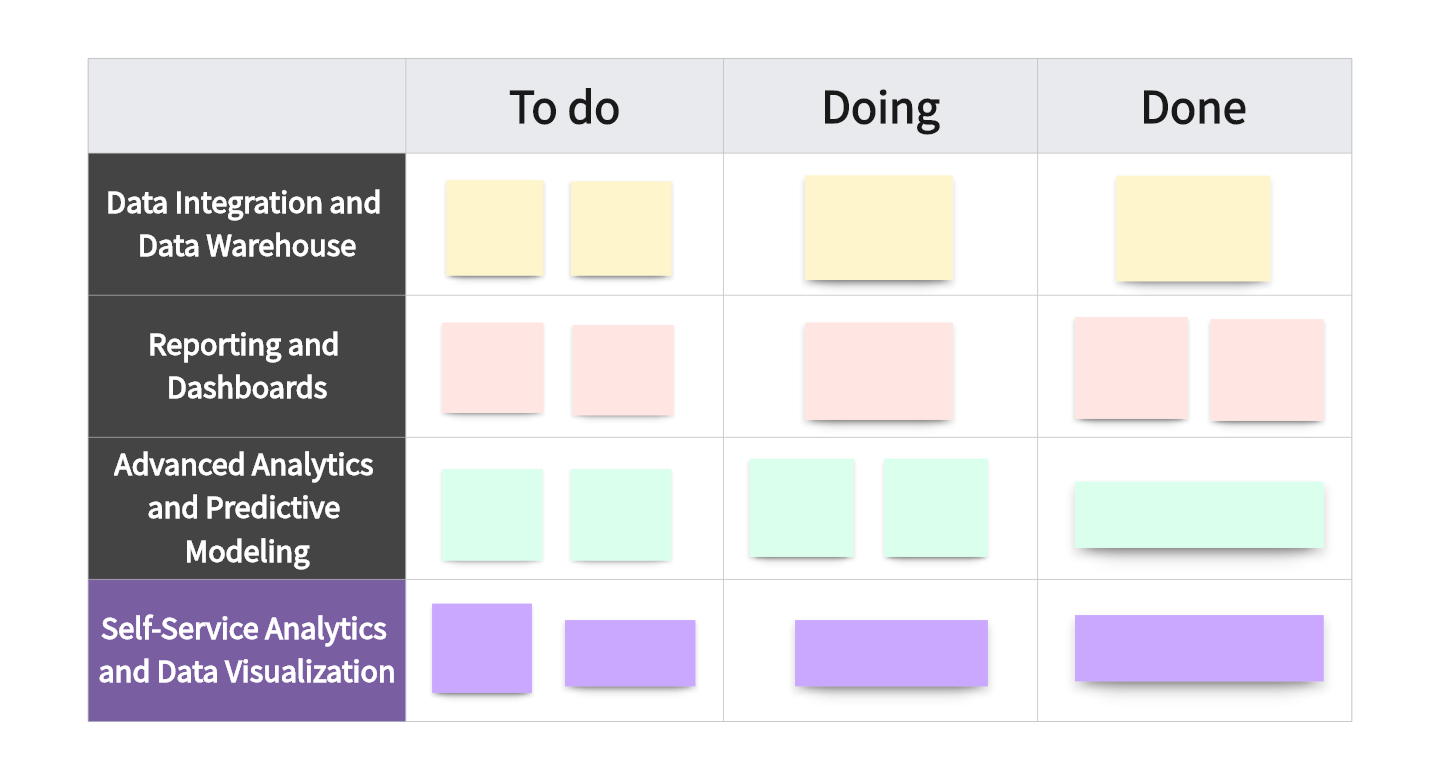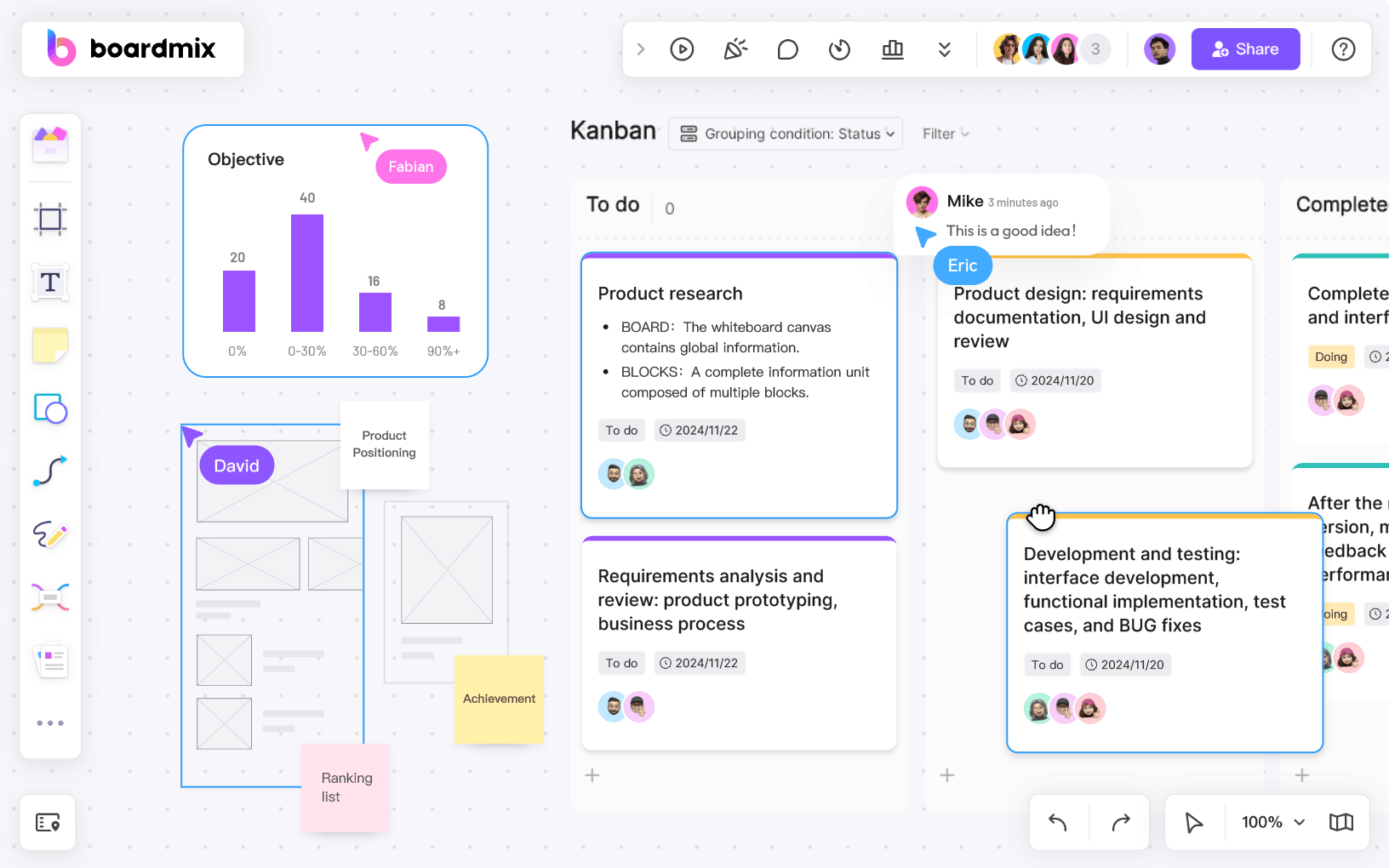In the contemporary business landscape marked by digitalization and rapidly evolving technologies, establishing a robust technological foundation is no longer optional, but an imperative. This is where a technology roadmap comes into play. In particular, a BI (Business Intelligence) Technology Roadmap emerges as a key strategic tool for organizations to navigate the digital landscape.
A BI Technology Roadmap transcends beyond the mere alignment of IT capabilities with business objectives. It fuels business growth, provides insightful business decisions, and propels the organization towards sustainable development. Keep reading to find more.
Understanding the Concept of BI Technology Roadmap
At its core, a BI Technology Roadmap is a strategic document that outlines how business intelligence and data-related technologies will support the broader business agenda of an organization over time. It includes current and future state assessments, risk evaluations, potential opportunities, and projected technology trends.

To truly understand the concept of a BI Technology Roadmap, one must delve into its key components:
Technology Landscape
The existing technology landscape serves as the basis for the BI Technology Roadmap. This comprises the hardware and software infrastructure, data management systems, analytical tools, and more, currently utilized in the organization.
Future Technological Trends
A foresight into upcoming technological advancements is crucial in crafting a robust BI Technology Roadmap. This involves understanding future trends in data analytics, AI, machine learning, data storage and more.
Risk Assessment
Understanding the potential risks associated with future technological implementations is a vital aspect of a BI Technology Roadmap. This includes an evaluation of data security risks, compatibility issues, financial risks among others.
Business Goals
The ultimate aim of any BI Technology Roadmap is to drive the organization towards its business goals. The roadmap should align with these goals and be designed to leverage BI technologies for achieving these objectives.
Significance of BI Technology Roadmap in Business Strategy
Incorporating a BI Technology Roadmap into the business strategy brings an array of benefits:
Informative Decision Making
Business intelligence is all about transforming raw data into insightful information. A well-structured BI Technology Roadmap helps businesses make informed strategic decisions backed by concrete data insights.
Enhancing Competitive Edge
The business landscape is highly competitive and having a strategic advantage can make all the difference. With a solid BI Technology Roadmap, businesses can leverage advanced BI technologies to stay ahead of their competitors.
Efficient Resource Allocation
By offering clear visibility into future IT requirements, a BI Technology Roadmap ensures that IT resources are optimally allocated and used effectively.
Facilitating Change Management
Implementing new technologies is often met with resistance. A BI Technology Roadmap, with its systematic phased approach, can serve as a change management tool to smoothen this transition.
Cost Saving
In the long run, strategic utilization of resources and proactive risk management facilitated by a BI Technology Roadmap result in significant cost savings.
A BI Technology Roadmap emerges not merely as an IT strategy document but as an instrument that orchestrates business growth through informed decisions, competitive advantage, and efficient resource utilization. As such, its integration into the broader business strategy is vital to the success of any modern organization.
Steps to Formulate a Powerful BI Technology Roadmap
Creating a robust BI Technology Roadmap is not an overnight process, but one that requires careful thought, strategic planning, and a clear understanding of business goals. Here are the crucial steps to formulate an impactful BI Technology Roadmap:
Step 1. Identify the Business Objectives
The foundation of any BI Technology Roadmap is the business goals it aims to support. Begin by identifying and defining your organization's key objectives, whether it's boosting sales, enhancing customer experience, improving operational efficiency, or something else.
Step 2. Assess the Current Technology Landscape
Evaluate the existing BI technologies and infrastructure in your organization. This involves assessing the current hardware, software, data storage systems, and analytic tools used for business intelligence purposes.
Step 3. Understand Future Technology Trends
Stay abreast of the emerging trends in BI technology. These can significantly influence your BI Technology Roadmap as they can present both opportunities and challenges for your organization.
Step 4. Conduct a Gap Analysis
Perform a gap analysis to identify the difference between where you currently stand and where you need to be in terms of your BI capabilities. The results from this analysis will form the basis of your roadmap.
Step 5. Develop a Strategy
Based on your business objectives, current state, future trends, and gap analysis, develop a strategic plan. This includes defining what BI technologies will be required, when they should be implemented, and how they will drive your business goals.
Step 6. Review and Iterate
A BI Technology Roadmap is not a static document. It should be regularly reviewed and updated based on changes in business objectives, technology trends, and results from past implementations.
A Versatile BI Technology Roadmap Maker - Boardmix
Crafting a BI Technology Roadmap is a complex task requiring expertise and significant time commitment. That's where Boardmix, a versatile BI technology roadmap maker, comes into play. This comprehensive tool simplifies the process of creating a BI Technology Roadmap, making it more efficient and effective.

Here are the features that make Boardmix stand out:
- User-Friendly: Boardmix’s intuitive interface makes it easy for users of all technical levels to create, view, and modify their BI Technology Roadmap.
- Collaborative: Boardmix enables collaboration, allowing various stakeholders in the organization to contribute to the roadmap. This ensures alignment across different teams and enhances overall decision-making.
- Scalable: Regardless of your organization's size or IT complexity, Boardmix’s scalability ensures that it caters to your specific needs. As your business grows and evolves, so does Boardmix’s capabilities.
- Secure: With stringent security measures in place, Boardmix ensures that your BI Technology Roadmap and associated data remain protected at all times.
In essence, Boardmix is not just a tool for creating a BI Technology Roadmap, but a strategic partner that empowers organizations to align their BI capabilities with their business goals effectively. It simplifies and streamlines the roadmap process, ultimately driving your organization towards sustainable growth in the digital era.
Case Study: Successful Deployment of BI Technology Roadmap
Understanding the theory behind a BI Technology Roadmap is one thing, but seeing it in action can provide more tangible insights. Let's delve into a real-world example of a successful BI Technology Roadmap deployment - a large retail corporation that transformed its data landscape and fueled its business growth.
Company Background
The company in focus is a multinational retail corporation operating several hypermarkets and discount department stores. As an industry leader, the corporation generates a vast amount of data every day, from sales and customer behavior to inventory and operations.
However, their existing technology infrastructure was insufficient to handle this surge of data, leading to ineffective decision-making and limited growth. The corporation identified the need to improve its BI capabilities to better leverage data for strategic decision-making and drive business growth.
Formulating the BI Technology Roadmap
The corporation initiated the formulation of a BI Technology Roadmap, aligning with its overarching business goals - enhancing customer experience, improving operational efficiency, and increasing sales.

The first step was conducting a thorough assessment of the existing BI technology landscape. They identified several issues such as outdated hardware, lack of integrated systems, inefficient data management, and minimal use of predictive analytics.
Next, the corporation studied upcoming BI technology trends and their potential impact. This included advancements in cloud computing, AI-based analytics, real-time data processing, and more.
Then, a gap analysis was performed to bridge the divide between their current state and desired future state. Based on this, a detailed strategy was devised for the phased implementation of new BI technologies.
Implementing the BI Technology Roadmap
Over several years, the corporation gradually implemented the strategies outlined in their BI Technology Roadmap. This involved migrating data to cloud platforms for better scalability and accessibility, integrating disparate systems for more streamlined data flow, implementing advanced analytics tools for predictive insights, and enhancing data security measures.
The BI Technology Roadmap was not stagnant but continually reviewed and iterated based on feedback from different stages of implementation, changing technology trends, and evolving business goals.
Result of the Successful Deployment
The successful deployment of the BI Technology Roadmap resulted in significant improvements in the corporation's overall business strategy:
- Enhanced Customer Experience: By leveraging customer behavior data effectively through advanced analytics, the corporation managed to personalize marketing strategies and improve customer experience.
- Improved Operational Efficiency: By streamlining data flow and facilitating real-time data access, operations were made more efficient.
- Increased Sales: Predictive analysis of sales data helped identify patterns and make proactive business decisions, leading to an increase in sales.
- Cost Savings: Through strategic allocation of IT resources and proactive risk management, substantial cost savings were achieved over time.
This case study vividly illustrates how a BI Technology Roadmap can serve as a catalyst for significant business improvements when formulated and implemented strategically.













